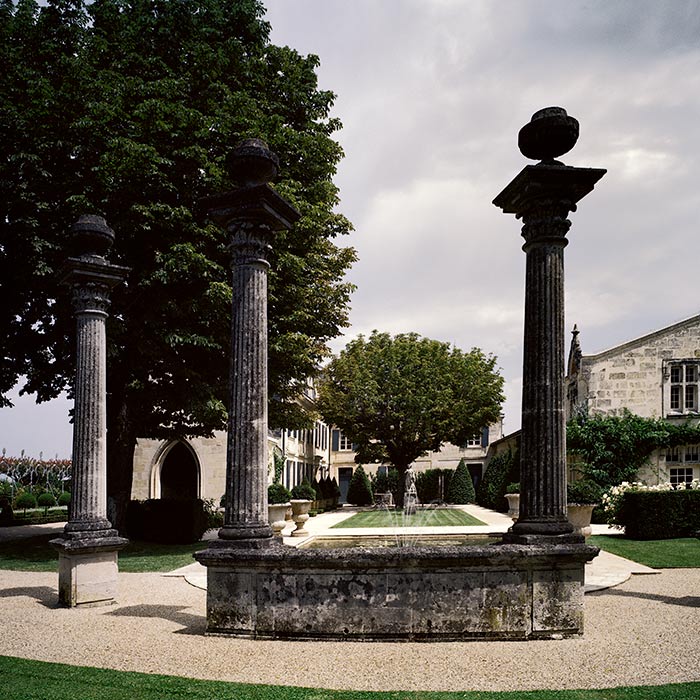Bordeaux 2017: drinking wine
Author: Will Lyons

Ch. la Mission Haut-Brion. Photograph: Jason Lowe
At Ch. La Mission Haut-Brion we taste in silence. The oak panelled tasting room, which sits high above a gravel courtyard replete with topiary, cloisters and clipped, manicured lawns, has the feel of an Oxbridge college, perhaps All Souls, which dates back to 1438. The only sound you can hear is the gentle fall of the fountain and the burr of the outskirts of the city, which now encroach and circle its vineyard. There is a feeling of longevity in this corner of Bordeaux. At neighbouring Ch. Pape Clément they make a big deal of their history, playing up the ecclesiastical heritage, it was once owned by Bernard de Groth who later became Pope Clément V, and has gothic chandeliers hanging above the cellar.
Haut-Brion itself dates back to 1525 and is mentioned in King Charles II’s cellar book from 1660 and the diaries of Samuel Pepys. Today the wines of Pessac-Léognan and Graves are some of the most delicate, light and fruit-driven in Bordeaux. In 2017, quality isn’t uniform but that is not to say there are not some spectacular wines. Haut-Brion is a case in point, producing an expressive wine with dark fruit and precise, fine tannins. Some say La Mission Haut-Brion is even better, with its characteristic aromatics of blackcurrant, wood smoke and mocha finishing long and taught. The winemaker at Ch. Haut-Brion, Jean-Philippe Delmas, compares the 2017 to 1988 because of the freshness of the acidity and the ripeness of the fruit.
“These samples are easy to taste,” he says. “Not just at Haut-Brion but everywhere. If I remember the 2001 en primeur vintage it reminds me of these samples but really I think the comparison is 1988, this is a modern version of 1988.”
It was a view expressed a day earlier by Christel Spinner, winemaker at Ch. Grand-Puy-Lacoste in Pauillac. “I love this kind of vintage, like 2014, because it is easy to drink,” she says. “You have minerality, which is something you don’t have in a hot vintage.” She says the wines have freshness, are well balanced, not full bodied, but have very ripe tannins. The Grand-Puy-Lacoste this year has a delicate perfume of blackcurrant, cassis, raspberry and red fruit.
If we are to assess the quality of the wines from this vintage, a snap shot of 60 of the region’s best châteaux, one would look to descriptors such as medium-bodied, pure, ripe red fruit, high acidity with, in the best examples, silky tannins and a very long after taste. Let’s not pretend it has the quality of 2015 or 2016. But stylistically they are also far removed from a big, ripe year such as 2009. If 2016 was a vintage that reset Bordeaux, 2017 follows in that style: a return to lower alcohol levels, less oak, more delicate winemaking and a softer, fresher style. It is a cooler vintage but with a modern expression, that expression coming through purer fruit and better winemaking.
To follow all our coverage and keep up to date with the full campaign, click here.


